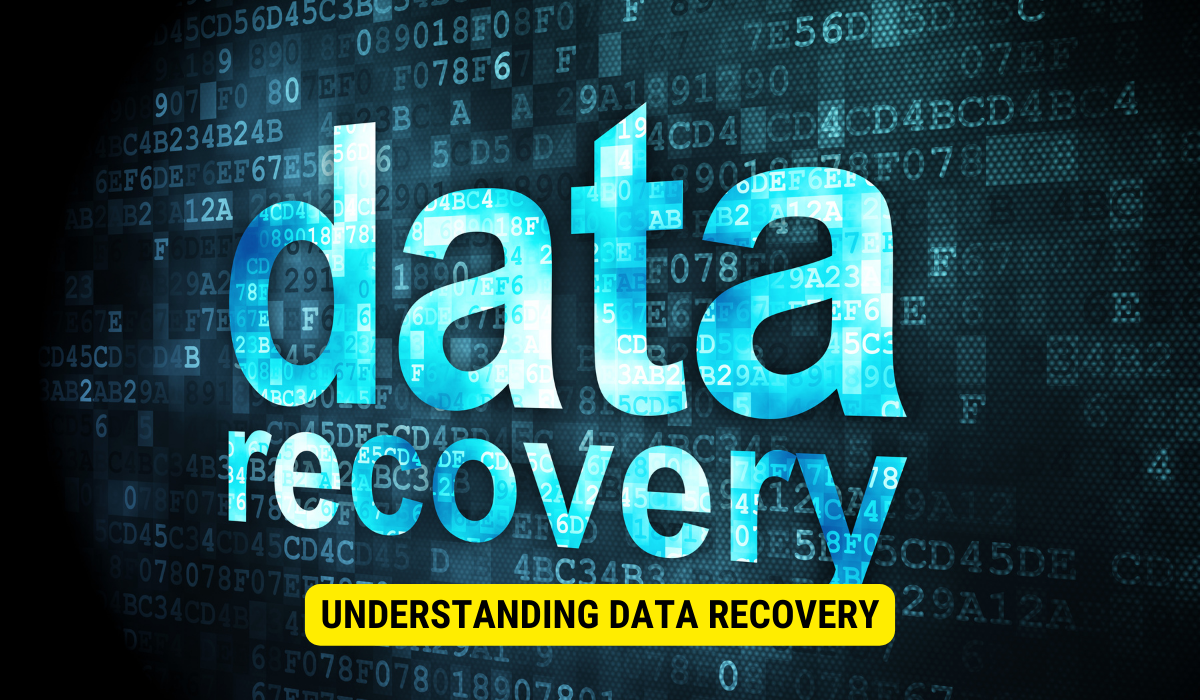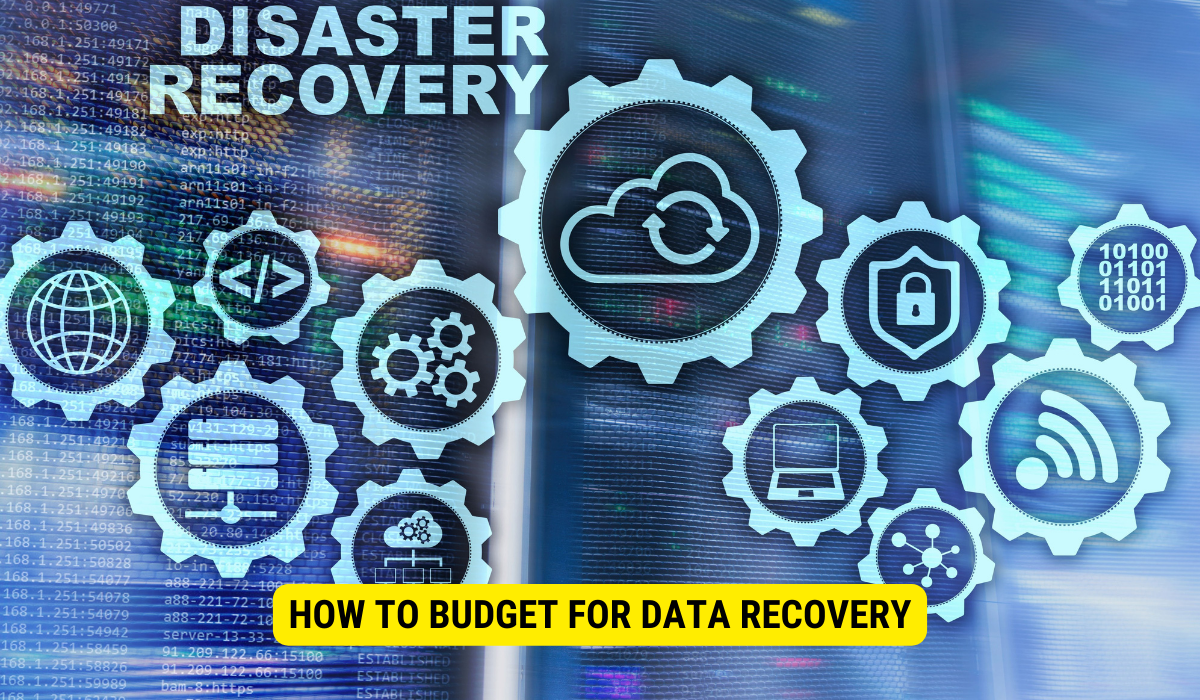The cost of secure data recovery varies based on several factors, including the complexity of the recovery, the type of storage device, the severity of data loss, and the chosen pricing model. Hardware repairs, remote recovery, or emergency services can incur additional costs.
Have you ever experienced the panic-inducing moment when you realize that your important files, photos, or documents have disappeared from your computer? Whether due to a hard drive crash, accidental deletion, or a virus attack, data loss can be a nightmare, causing stress and frustration. Fortunately, experts in the secure data recovery field can help retrieve your precious information. But before you embark on this journey, it’s vital to understand the factors affecting the cost of secure data recovery.
Understanding Data Recovery
Data recovery is salvaging unreachable, lost, or corrupted digital information from several storage policies, such as hard drives, solid-state drives, USB flash drives, and memory cards. It involves utilizing specialized techniques and software to retrieve the data. By allowing professionals to handle the recovery process, you increase your chances of successfully retrieving your valuable files.
What is Data Recovery?

Data recovery is the technology-driven process of salvaging and retrieving lost, inaccessible, or deleted data. When lost or damaged, files remain physically present on the storage device, but the operating system can no longer access them. Data recovery authorities use specialized tools and techniques to extract and make this data accessible again.
Importance of Secure Data Recovery
Your data is valuable, and its loss can have severe consequences. Whether it’s personal data such as family photos or crucial business files, the inability to access this information can disrupt your life and hinder your productivity. Secure data recovery ensures that your files are retrieved without compromise, protecting your privacy and safeguarding sensitive information from falling into the wrong hands.
Factors Influencing Data Recovery Costs
Several factors contribute to the overall cost of secure data recovery services. Understanding these factors will help you measure the expenses and make informed decisions about your recovery options.
Complexity of the Recovery Process
The complexity of the recovery process plays a significant role in determining the cost. Simple data recovery tasks like accidental file deletion can be less expensive than complex recoveries involving severe hardware damage or extensive data corruption. The more time and expertise required, the higher the cost.
Type of Storage Device
The type of storage device that experienced data loss also affects the cost. Different devices, such as hard drives, solid-state drives, flash drives, and memory cards, have varying recovery techniques and tools. Some devices may require specialized equipment or methods, leading to higher recovery costs.
Severity of Data Loss
The severity of data loss is another significant factor. If only a portion of your data is lost or corrupted, the recovery process might be quicker and less costly than a complete data loss scenario. Extensive damage or total loss can be more challenging to recover, increase the complexity, and raise costs.
Pricing Models for Data Recovery Services
Data recovery service providers often employ pricing models to accommodate customer needs and maximize cost transparency. Understanding these mockups will help you choose the option that best aligns with your necessities and budget.
Flat Fee Pricing
A flat fee pricing model offers a fixed cost for data recovery services, regardless of the complexity or extent of data loss. This model can provide peace of mind, as you know the price upfront, but it may not account for all possible scenarios. It is crucial to inquire about any potential additional costs that may arise.
When opting for a flat fee pricing model, you can rest assured that the cost will remain the same, regardless of the amount of data to be recovered or the difficulty level involved. This pricing structure is particularly beneficial for individuals or businesses with a clear understanding of their data loss situation and a fixed budget in mind.
Moreover, data recovery service providers offering flat fee pricing often provide comprehensive services that cover various types of data loss, such as unplanned deletion, hardware failure, or software corruption. This means that regardless of the cause of your data loss, you can rely on the service provider to recover your valuable information.
Pay per GB Pricing
Pay-per-GB pricing, or “scaled pricing,” charges customers based on the amount of data to be recovered. This model ensures that you only pay for the successfully retrieved data. While it offers flexibility and cost control, estimating the total cost upfront may be challenging, especially if the extent of data loss is unknown.
With pay-per-GB pricing, you can only pay for the specific amount of data that needs to be recovered. This model is particularly useful when you have a large volume of data to be restored, as it allows you to manage costs more effectively. Additionally, pay-per-GB pricing can be beneficial when dealing with partial data loss, as you won’t be charged for the data that is not recoverable.
However, it is important to note that pay-per-GB pricing may require an initial evaluation of the data loss situation to determine the exact amount of data that can be recovered. This evaluation process may involve additional time and effort from the service provider, potentially affecting the overall cost.
Emergency Recovery Pricing
In urgent situations where time is of the essence, some data recovery service providers offer emergency recovery pricing. This service prioritizes your recovery case and ensures expedited processing. However, emergency recovery often incurs higher costs due to the resources and immediate attention required.
Emergency recovery pricing is designed to address critical data loss situations that require immediate action. Whether it’s a business-critical database or personal files with sentimental value, this pricing model guarantees a swift response from the service provider. The higher costs associated with emergency recovery pricing are justified by the priority given to your case and the dedicated resources allocated to expedite the recovery process.
It is important to consider emergency recovery pricing as an option when time is a crucial factor. However, assessing the urgency of your situation and evaluating the potential impact of the higher costs on your budget is recommended before opting for this pricing model.
When choosing a pricing model for data recovery services, it is essential to consider your specific needs, budget, and the situation’s urgency. By understanding the different valuing models available, you can make a knowledgeable choice, ensuring your valuable data’s successful recovery.
Additional Costs in Data Recovery
While the pricing models mentioned above cover the core data recovery services, additional costs may arise during the process.
Regarding data recovery, various factors can contribute to the overall cost. Let’s take a closer look at some of the additional costs that you may encounter:
Hardware Repair Costs
Hardware repair costs can apply if the data loss is due to physical harm to the storage device, such as a malfunctioning hard drive or a broken flash drive. Repairing or replacing components to restore the device’s functionality adds an extra expense to the recovery process.
Hardware repair costs can vary depending on the extent of the damage and the complexity of the repair. In some cases, replacing specific parts of the storage device, such as the read/write head in a hard drive or the controller board in a flash drive, may be necessary. These replacement parts can come at a significant cost, especially if they must be sourced from specialized suppliers.
The labor involved in repairing the hardware can also contribute to the overall cost. Skilled technicians with expertise in data recovery may need to spend hours meticulously working on the damaged device to ensure a successful recovery.
Remote Recovery Costs
Data recovery can sometimes be performed remotely without physically shipping the storage device to a recovery center. However, remote recovery services, such as secure data transmission or specialized remote access tools, may involve additional costs.
Ensuring the security and confidentiality of your data during remote recovery is crucial. Data encryption and secure transmission protocols may be employed to protect your sensitive information from unauthorized access. These security measures can add to the overall cost of the recovery process.
Moreover, specialized remote access tools may be required to connect with the storage device and retrieve the lost data. These tools often come with licensing fees or subscription costs, which are passed on to the customer.
It’s important to note that not all data loss scenarios are suitable for remote recovery. In cases where the storage device is physically damaged or requires hardware repairs, remote recovery may not be feasible, and the additional costs associated with this service may not apply.
Understanding the potential additional costs in data recovery can help you make up-to-date decisions when choosing a service provider. It’s essential to consider these factors alongside the core pricing models to ensure you have a comprehensive understanding of the overall cost of the recovery process.
How to Budget for Data Recovery
Budgeting for data recovery is crucial to minimize financial surprises and ensure you can take the necessary steps to retrieve your lost data. Consider the following guidelines to estimate potential recovery costs:
Estimating Potential Recovery Costs
Reach out to reputable data recovery service providers and provide them with as much information about your data loss situation as possible. They can often provide a rough estimate based on the information you provide. Be prepared to give details such as the storage device type, the symptoms of data loss, and the data size you need to recover.
Planning for Unexpected Data Loss
Data loss can happen unexpectedly, causing stress and financial strain. Consider including data recovery in your overall data management strategy to mitigate the impact. Regularly back up your critical files and consider investing in data protection measures such as redundant storage solutions or cloud backup services. Being active can help minimize the risk of data loss and potentially reduce recovery costs.
Remember, the cost of secure data recovery relies on various factors, but in many cases, the value of the retrieved data outweighs the expense. Consult with trusted data recovery professionals, compare pricing options, and take steps to safeguard your important files. Recovering your irreplaceable data is an investment in peace of mind and continuity.
Key Takeaways
- Data Recovery’s Role: Data recovery involves salvaging inaccessible or lost digital information with specialized techniques and software.
- Complexity Matters: The intricacy of the recovery process directly influences the associated cost. More complex recoveries usually incur higher expenses.
- Storage Device Variance: Different devices can necessitate diverse recovery tools and methodologies, resulting in cost variations.
- Pricing Models: Data recovery services typically offer varied pricing structures, such as flat fees, pay per GB, or emergency recovery costs, to cater to diverse scenarios.
- Plan Ahead: To avoid unexpected expenses, consider regular backups, data protection measures, and familiarizing yourself with potential recovery costs.
FAQs
What is data recovery?
Data recovery is the technology-driven process of salvaging and retrieving lost, inaccessible, or deleted data from storage devices.
How does the type of storage device affect recovery costs?
Different storage devices, such as hard drives or flash drives, may require unique recovery techniques and tools, leading to varied costs.
What pricing models are common for data recovery services?
Common pricing models include flat fee pricing, pay-per-GB pricing, and emergency recovery pricing.
Are there additional costs in the data recovery process?
Yes, additional costs can arise from hardware repairs, remote recovery efforts, or specific security measures during recovery.
How can I budget effectively for data recovery?
Obtain estimates from reputable data recovery providers, plan for unexpected data loss by incorporating it into your data management strategy, and consider regular backups and preventive measures.
Conclusion
Secure data recovery costs can range based on multiple factors, making it crucial for individuals and businesses to understand the potential expenses. By being proactive with data management and staying informed about recovery costs, one can mitigate the impacts of unexpected data loss and ensure the best outcome.
